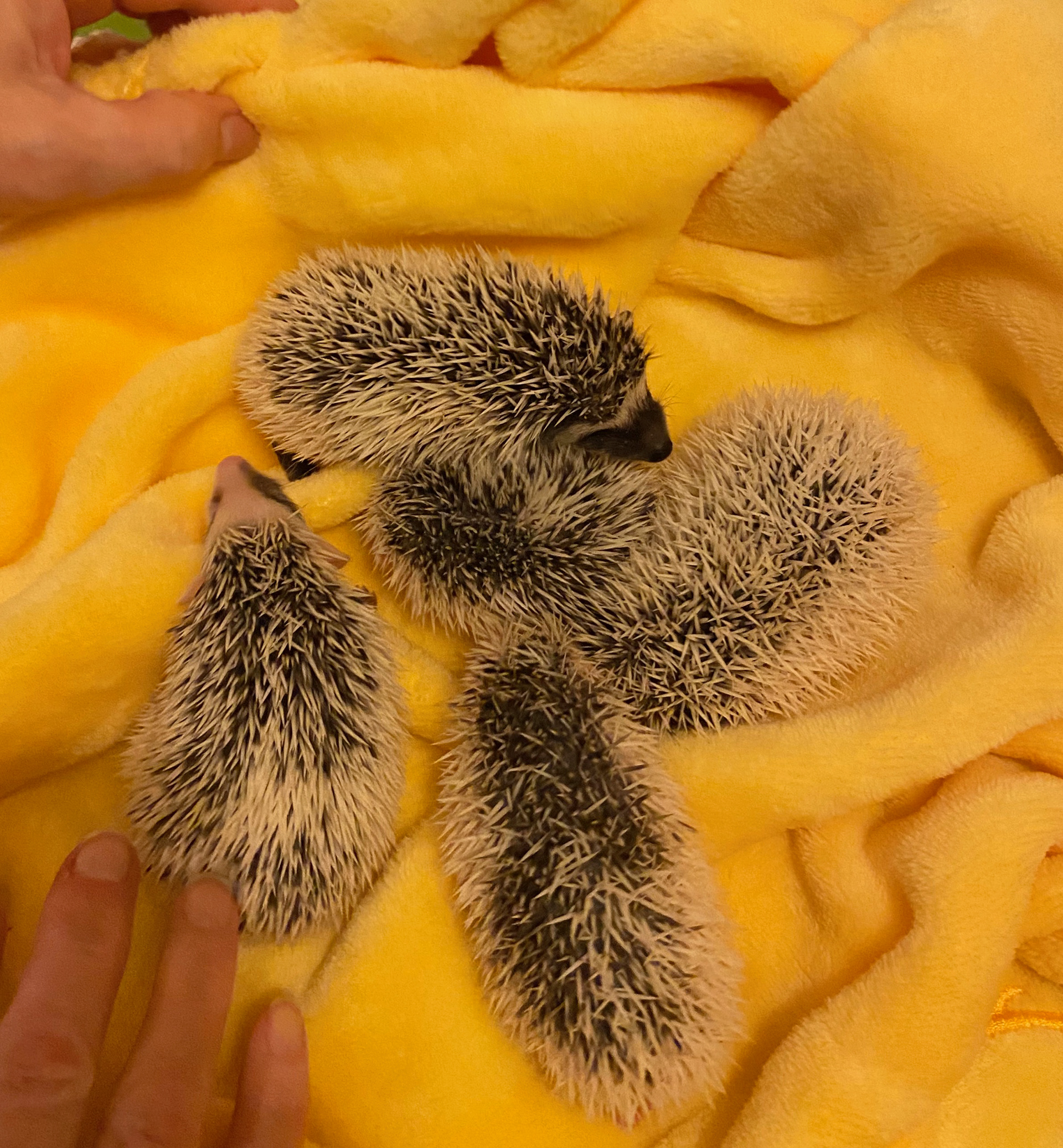
Buttercup's Litter - December 2020
I'm really pleased that you have decided to visit my website. You may be here simply because you are interested in African Pygmy Hedgehogs, or even just animals in general. Or you may be visiting because you are researching the possibility of becoming an APH owner, in which case, well done! The first thing I say to any prospective APH owner is "Do your research before you make any decisions"
Owning an African Pygmy Hedgehog is a big commitment and, due to their lifespans (up to 7 years is not uncommon), a long-term one. They require daily care and a not insubstantial financial outlay before you even pay for the hedgie. This page will take you through some of the factors you should be aware of and will discuss the steps that I need to take with you if you wish to give a home to a Huffington Hog. It isn't meant to be encyclopaedic - There is far too much to write about the ins and outs of keeping an African Pygmy Hedgehog to fit on one webpage, but it should at least give a sense as to what it's all about, and perhaps give you more ideas about where your research should lead you next.
If you are already an APH owner, wishing to know more about becoming a mummy or daddy to a Huffington Hog, then you can scroll down the page to the section entitled "My Role."
Habitat
African Pygmy Hedgehogs are solitary creatures by instinct, only coming together in the wild to mate. They are territorial and mature males will fight, sometimes to the death, if they encounter a rival. Although it is not unknown for unrelated females to live together as pets, this is the exception rather than the rule and not considered best practice. A single female hoglet may live quite happily with her dam, but this cannot be done with male offspring as it always leads to incestuous breeding.
African Pygmy Hedgehogs will not survive in the ambient temperatures of Northern Europe without the aid of a climate-controlled environment. If an APH's core temperature drops, it will go into a torpor, sometimes referred to as an attempted hibernation. Since the metabolism of APHs is not designed for hibernation, this can be fatal to the hedgehog.
The minimum standard for housing an African Pygmy Hedgehog is a fully enclosed container - not a cage, as APHs are poor climbers and invariably injure themselves if they try to scale bars. Although portable solutions such as the Zoo Zone 2 container can be used for short-term housing, this is not ideal as a permanent habitat since they are difficult to maintain temperature in, which is why I insist that all of the homes that my hoglets go to provide a vivarium with at least 700 square inches (1,750 square centimetres) of floor space. This equates to an area approximately three and a half feet by one and a half feet.
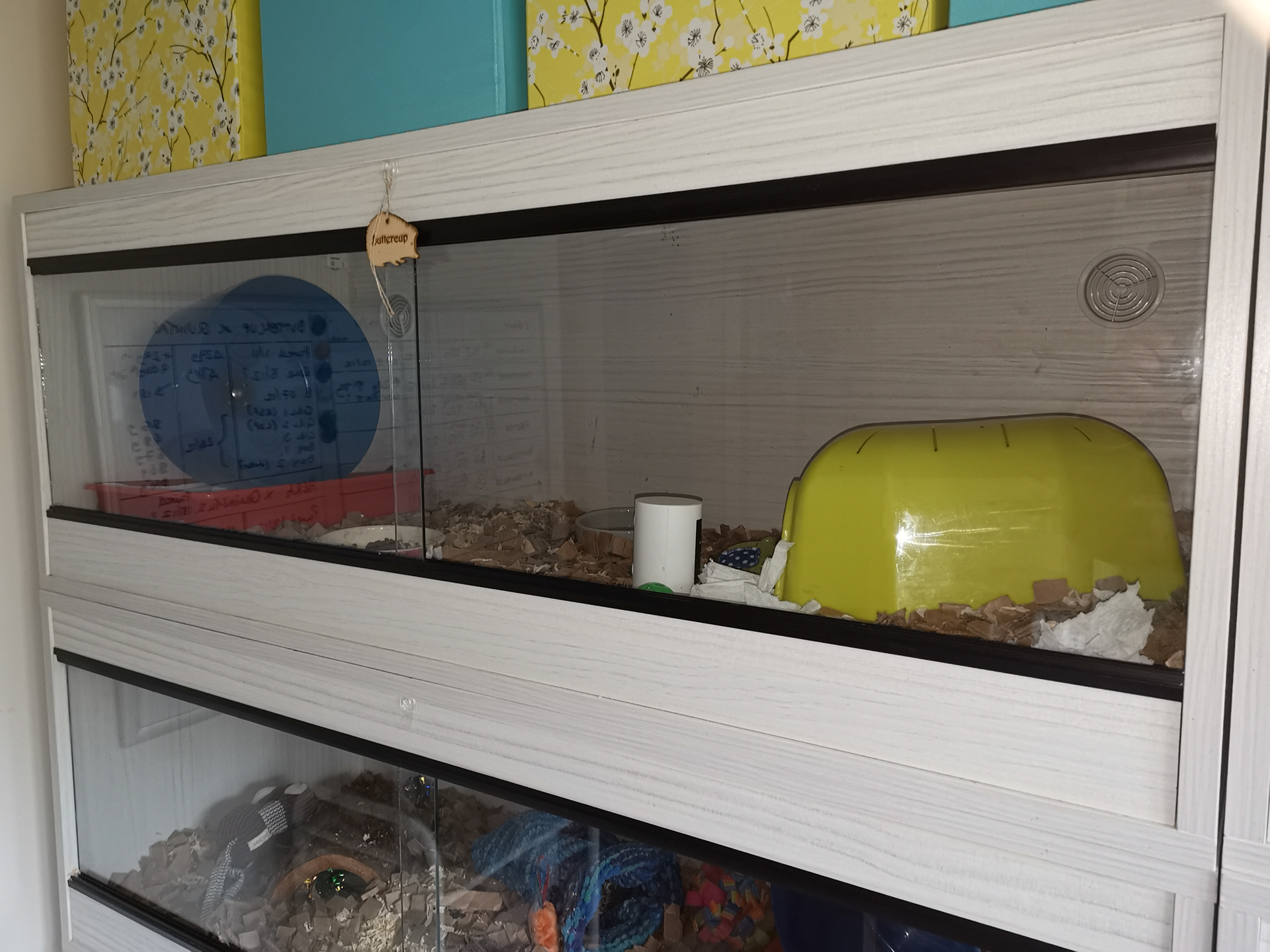
Vivarium
Above you can see one of my vivaria - being a breeder I have 12, so it's important that mine make the most efficient use of space, which is why mine are stackable. These ones came from a small company called Southdown Aquatics - https://www.southdown-aquatics.co.uk - who construct vivaria to order in a variety of styles, colours and sizes. There are other options available to achieve the same effect and I know several people who have successfully converted furniture such as glass-fronted cabinets into attractive-looking vivaria which complement the room they are in.
There are a number of options for how you line your vivarium. I favour shredded cardboard, but you may find that you prefer a fitted fleece liner - again these can be made to order depending on preferences for colour and the size required. The received wisdom is that wood shavings are not suitable since any dust residue can be ingested into the hedgehog's respiratory tract, leading to infection.
A heat source is a must for your vivarium. The most effective way of doing this is by fitting a Ceramic Heating Element (CHE - similar to a lightbulb but emitting only heat rather than light) linked to a thermostatic controller. The various elements are shown below (a guard will also be needed to prevent accidental burns) and are available from a number of manufacturers and countless retailers. I can discuss wattages and other technical specifications with prospective owners as needed.
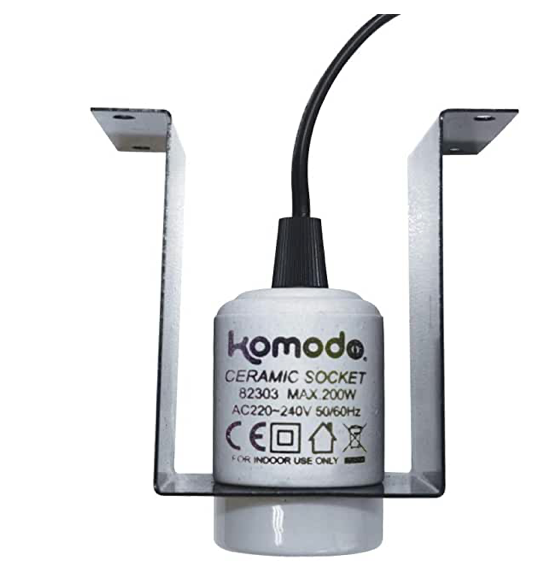


The thermostat will ensure that the vivarium climate remains consistent - around 23-24 degrees Centigrade - giving you peace of mind that your hog's core temperature will remain stable.
African Pygmy Hedgehogs sleep in a nest and this can be achieved by providing a fleece or wool snuggle sack for the APH to curl up in. I do provide a snuggle sack as part of the care package that comes when I send a hoglet to their new home, but you will need more than one to allow for laundry. Plastic igloos designed for guinea pigs work well, and you can push the boat out here and provide your hog with all sorts of luxury accommodation, including bespoke castles!
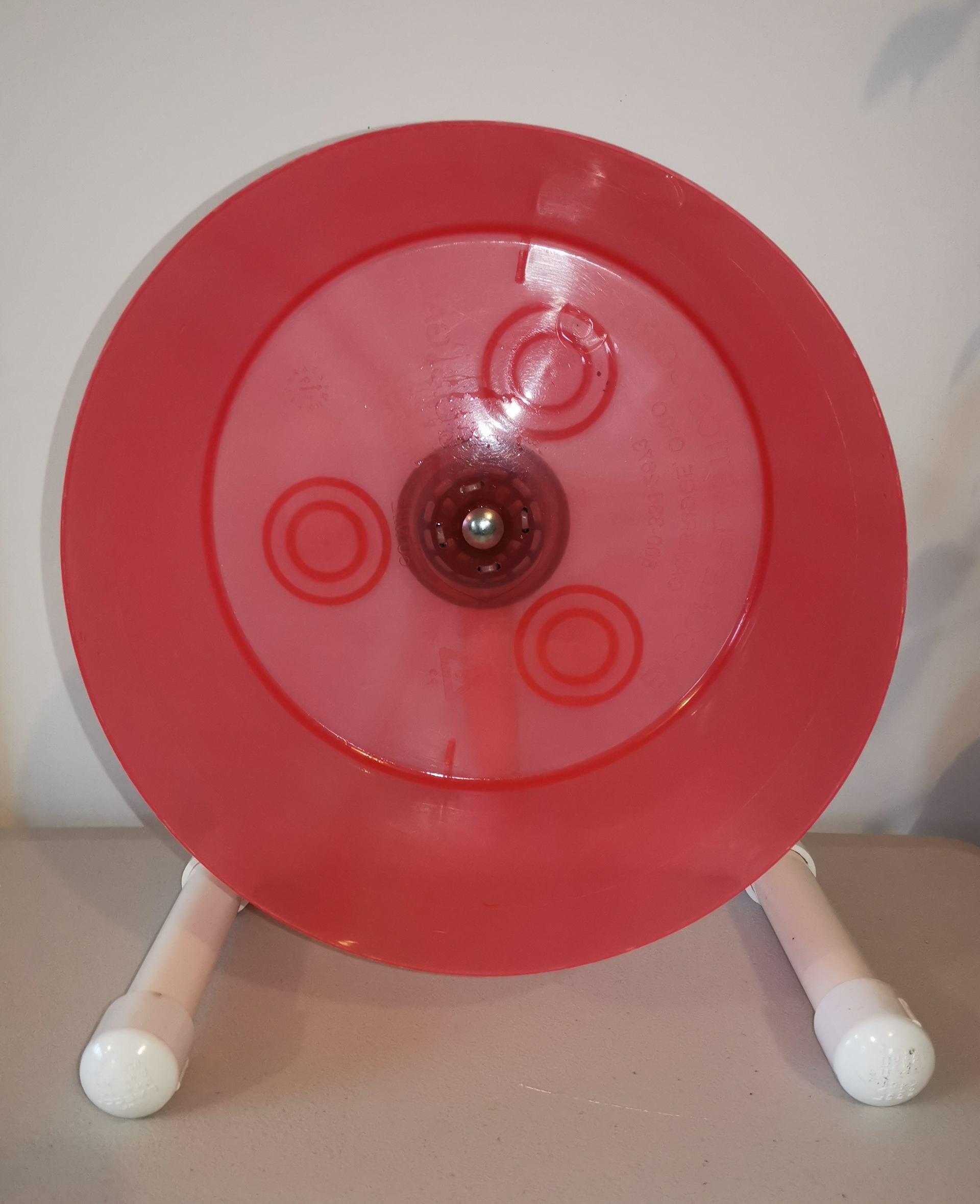
Carolina Storm Exercise Wheel
Exercise and stimulus are vital in providing the right habitat for African Pygmy Hedgehogs. Daily (or rather nightly, given their nocturnal habits) exercise comes in the form of a wheel in the vivarium. It's important to have the right sort of wheel: Those designed for hamsters and gerbils are rarely suitable due to their small size and it is imperative that the running surface is solid rather than slatted as APHs can be prone to getting toes and feet trapped in gaps, leading to fractures. I favour the wheels imported under the Carolina Storm brand (see the picture above) as they are robust, easy to maintain and have replaceable bearings meaning that, although not inexpensive, they will last for years (https://www.facebook.com/carolinastormwheelsuk).
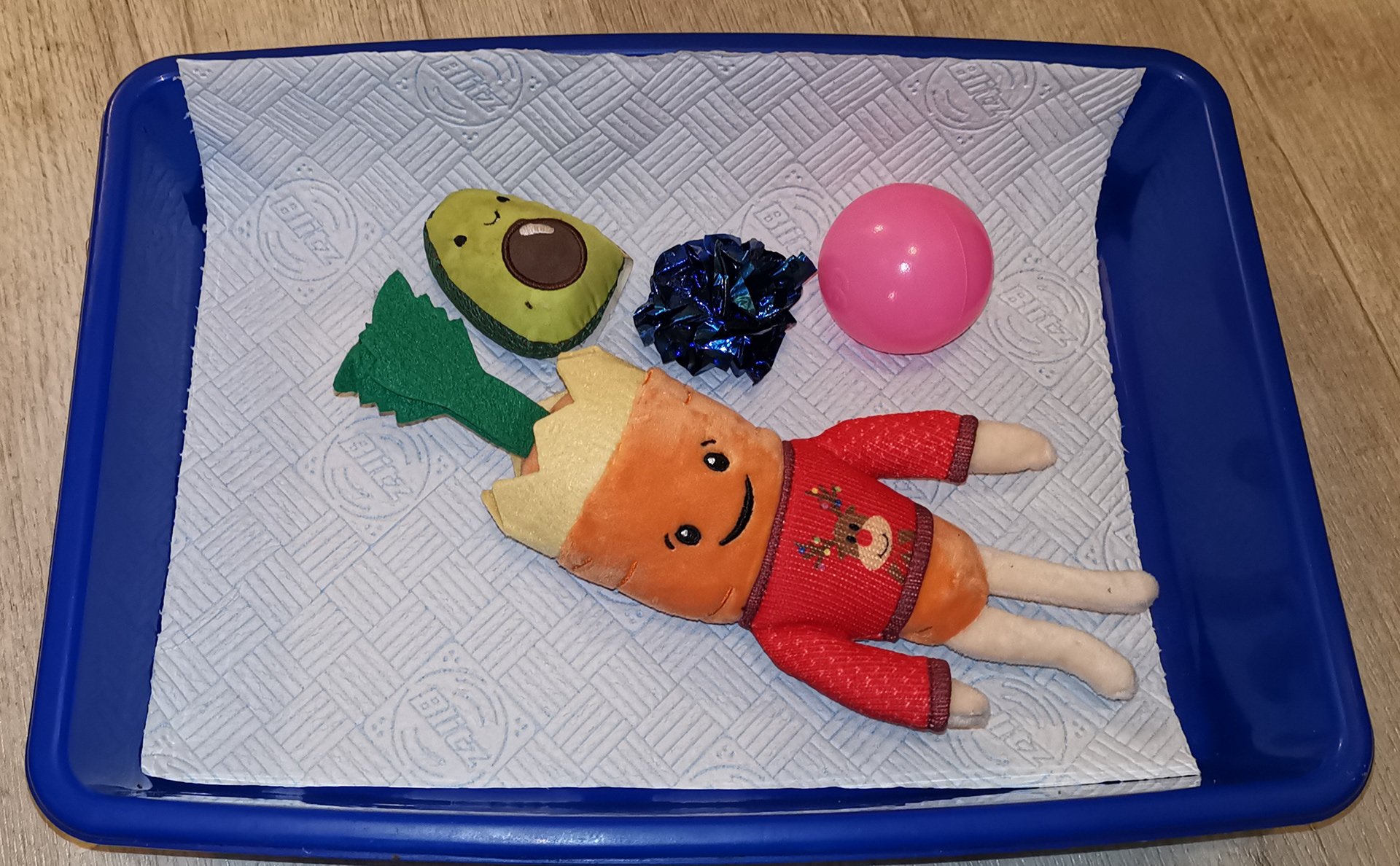
A few toys...
African Pygmy Hedgehogs love having something to play with. Cat toys, wool pompoms, balls, squeakers and suchlike all help to provide a stimulating environment for your hog. Obviously though, APHs don't share any sort of human desire for tidiness and order, so you will have to accept that most mornings will give the appearance that the hedgehog has had some sort of rave in their vivarium.
Daily Care
The carnage that greets hog owners each day leads us neatly on to what daily maintenance is required to keep an APH happy and healthy. The first thing to note is that African Pygmy Hedgehogs produce a prodigious amount of pee and poo - often when in their wheel, meaning that it will need to be cleaned thoroughly every day. APHs may also choose a spot within the vivarium to use as a toilet, so this will need to be cleared, together with any other noticeable deposits.
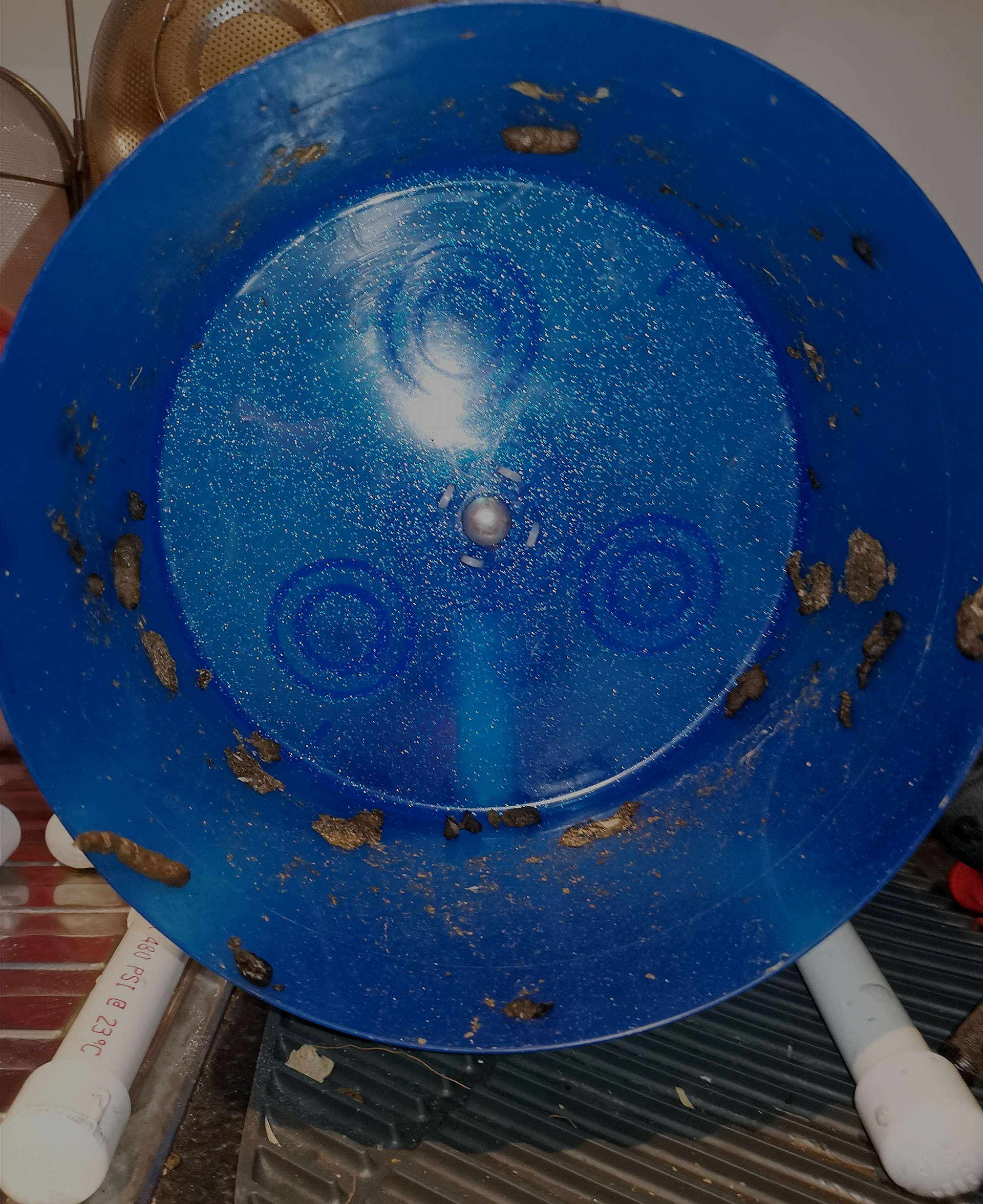
If the thought of dealing with this every day fills you with dread...
Fresh water is a must-have, supplied in a bowl as hedgehogs cannot use the bottles that you might be familiar with if you have previously kept rodents. The water bowl often ends up with as much food debris, toys or bedding in as water, so this has to be changed every single day.
Food
African Pygmy Hedgehogs have complex dietary needs which cannot be met from a single source. They are omnivorous, as evidenced by the sharp teeth that line their jaws (see the section on Human Interaction below to find out more about when and why you might get to experience quite how sharp these "cute ickle teefs" are...) but cannot digest anything with a high fat content (definitely no dairy) and fish is a no-no as well.
The main staple of the APH diet is found in higher-end proprietary cat biscuit however, since we are talking about an exotic pet, you won't simply be able to break out the Eukanuba and congratulate yourself for a job well-done. No single brand of cat biscuit contains the correct balance of protein, fibre, vitamins and fat, so it is necessary to create a mix from a number of different sources. Going into the detail of that will take up too much time and text here - If you are an APH owner you will already now this and have your food supplies in place, and if you are a prospective hoggie parent then I will go through it all with you in due course. Suffice to say that a couple of APH breeders make and supply hedgehog-friendly blends of cat food by the kilo and that, once you know the correct ratios, you may find it easier to make your own. I would emphasis though that neither course of action is cheap and that this regular expenditure is something that you will have to consider as part of your decision-making process.
Live food plays another important part of your hedgehog's intake - Mealworms, morio worms, cockroaches, locusts and any number of other bugs are vital for wellbeing and stimulus (APHs are keen hunters and enjoy nothing more than chasing a snack to be devoured in an often noisy and frequently messy kill).
By providing variety in the diet you can also enrich your hedgehog's life: Scrambled egg (cooked without milk or any other fat) and grilled or roasted unseasoned chicken are usually devoured with delight, and there are other fruit and vegetable treats you can fall back on as well. Again, this is a subject on which there is much discussion in the APH world and I can provide fact sheets as needed.
Human Interaction
If you have an African Pygmy Hedgehog as a pet then it stands to reason that you are going to want to spend time with it. What is important to remember though is that hedgehogs have their own individual temperaments, as unique as those of humans. Some enjoy being handled and are positively cuddly. This however is never to be expected from a hog. As I said above, they are by nature solitary creatures, and it is normal for a hedgehog to discourage being handled. Biting isn't a primary defensive measure (more commonly associated with seeing if an interesting-smelling human finger is food,), but balling up with quills interlaced and standing proud (referred to as "conkering") along with making huffing, popping and clicking sounds are all signals that the hedgie wishes to be left undisturbed.
Time and patience can train an APH out of this behaviour to the point where they can be easily handled and will happily sit bonding with their human. Some will figuratively 'splat' against your skin, pressing the maximum surface area of their body against yours doing an impression of a spatchcocked chicken, but there is never a guarantee that your hog will do this. It would be wrong of me as a breeder to state that your chosen hoglet will definitely end up exhibiting this kind of behaviour. Generally speaking, you get out what you put in as an African Pygmy Hedgehog owner.
As we have already discussed on the Welcome page and above, African Pygmy Hedgehogs are nocturnal, so don't expect to see them much during the day - This isn't a hard and fast rule though: APHs are as prone to getting up to have a wee, a snack and something to drink as a human. You can generally expect though that a hog will be more active during the hours of darkness and this is therefore when you will spend most time with it.
A playpen - a childrens' paddling pool (not the inflatable sort for obvious reasons) is ideal for this - filled with toys and a handful of live food, makes a great environment to break up a hedgie's routine and offer a change of scenery. An electric heated pad underneath the playpen will provide sufficient warmth to maintain the hedgehog's core temperature while away from the vivarium but constant supervision is required.
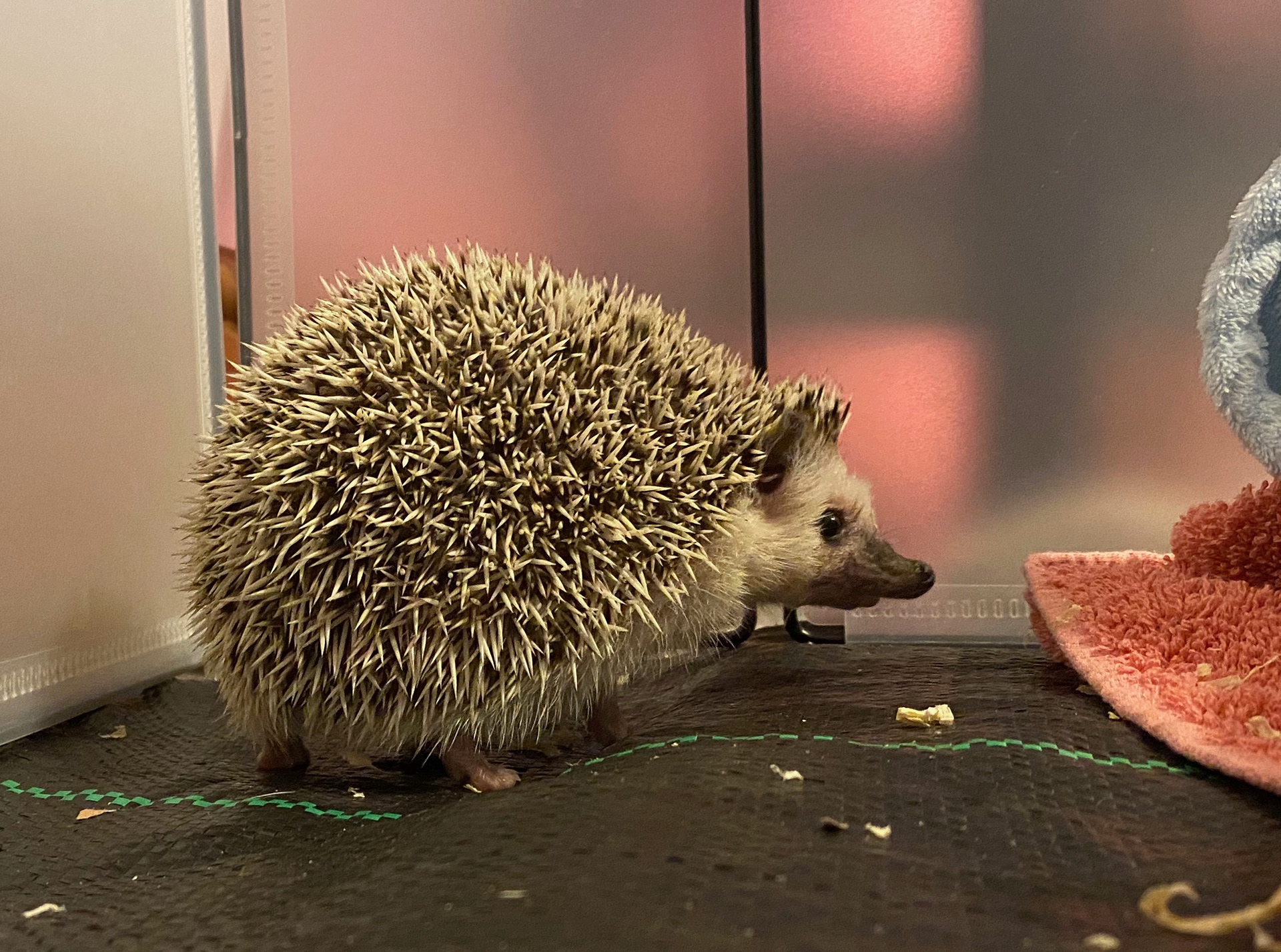
Having a bit of an explore in the playpen.
Your interactive time with your hog will also provide opportunities to see to the hedgehog's other wellbeing requirements. Running through their own faeces while wheeling during the night inevitably leads to dirty feet - referred to as "poo boots" by APH owners - so a shallow bath of warm (not hot) water will be necessary from time to time. Adding a gauze bag of porridge oats to the bath will produce a milky balm that soothes the dry skin that APHs can be prone to. Bath time is also an excellent time to check that claws haven't grown too long - if neglected it is not unknown for hedgies to blind themselves while scratching, so keeping them trimmed with sharp nail scissors is an important task.
My Role
As a responsible breeder I have a duty of care to all of my hoglets. This means that when I am approached by anybody looking to give one of my babies a home, I have to carry out a due diligence regime to ensure that the prospective owner can provide the appropriate environment and has a level of knowledge that will mean they can give the necessary care for their hoglet.
As a starting point I will have a telephone conversation with the prospective owner - This is non-negotiable and there are no exceptions - I will not be supplying anyone with one of my hedgehogs on the basis of an email or Facebook message. That said, these conversations are very informal and help me and the prospective owner assess whether owning an APH is the right decision for them. If I and the prospective owner are both happy with the outcome of the discussion then a hedgehog can be chosen from those that are available. Although my fees are broadly in line with other breeders, I have a policy of not discussing cost until I am satisfied that I will be supplying the prospective mummy or daddy with a Huffington Hog. I will take a non-refundable deposit at this point (roughly a third of the final cost of the hedgie) which will signify a binding contract of sale. Prior to the hedgehog going to its new home I will need to see photographs of the accommodation that the hoglet will be living in, along with evidence that contingency planning is in place for veterinary care.
All hedgehogs are supplied initially on a Pet-Only basis - i.e. They are not authorised to be used as breeding stock. Both the new owner and I will sign a legally-reviewed and binding contract placing obligations on me as the breeder to provide advice and support for the length of the hog's life (or my life - whichever ends first!) as well as ensuring that the owner will always give the hedgehog the correct care. This is an earnest undertaking: I am in regular contact with the vast majority of all of the mummies and daddies of the Huffington Hogs family.
Before the hedgehog can leave for its new home it needs to be at least seven weeks old, 150g in weight and to have completely finished weaning. A care pack, specifically tailored to the experience of the new owner, is provided to go to the new home with the hoglet, which always includes a generous supply of change-over food and a number of other customised goodies.
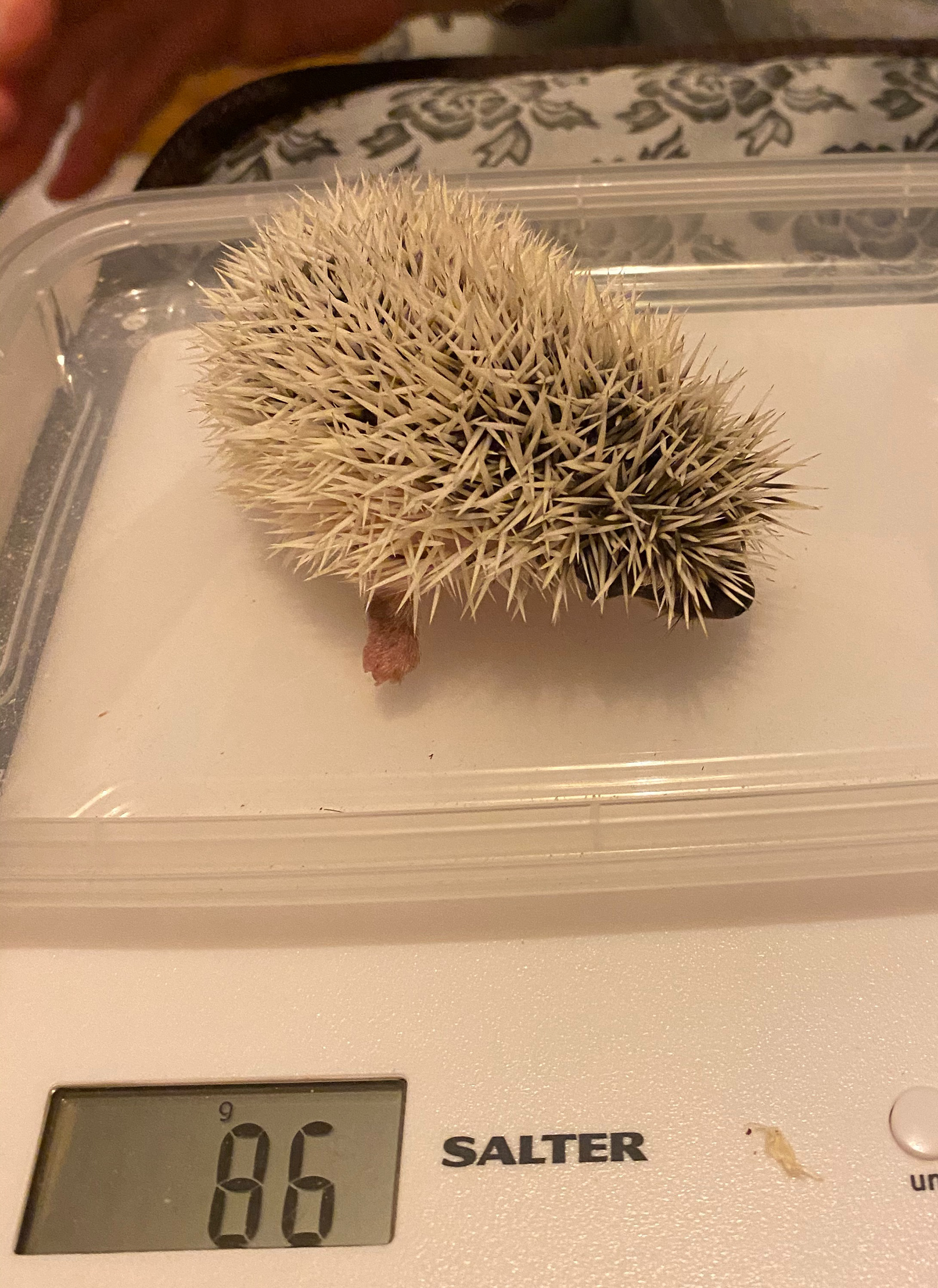
Hoglets need to weigh at least 150g before going to their new home.
It can sound quite daunting, and I would be fibbing if I said that they are easy creatures to look after. That said, I was a first-time hedgehog owner too once, but with research and advice from other owners and breeders I never looked back!
Disclaimer: I have received no considerations, either financial or in kind, for mentioning the suppliers above or for providing links to their respective websites and/or social media.
All of the images on this website are protected by copyright and may not be reproduced elsewhere without the express prior consent of Huffington Hogs. While every care is taken, I accept no liability for the content of web sites to which I have provided links.